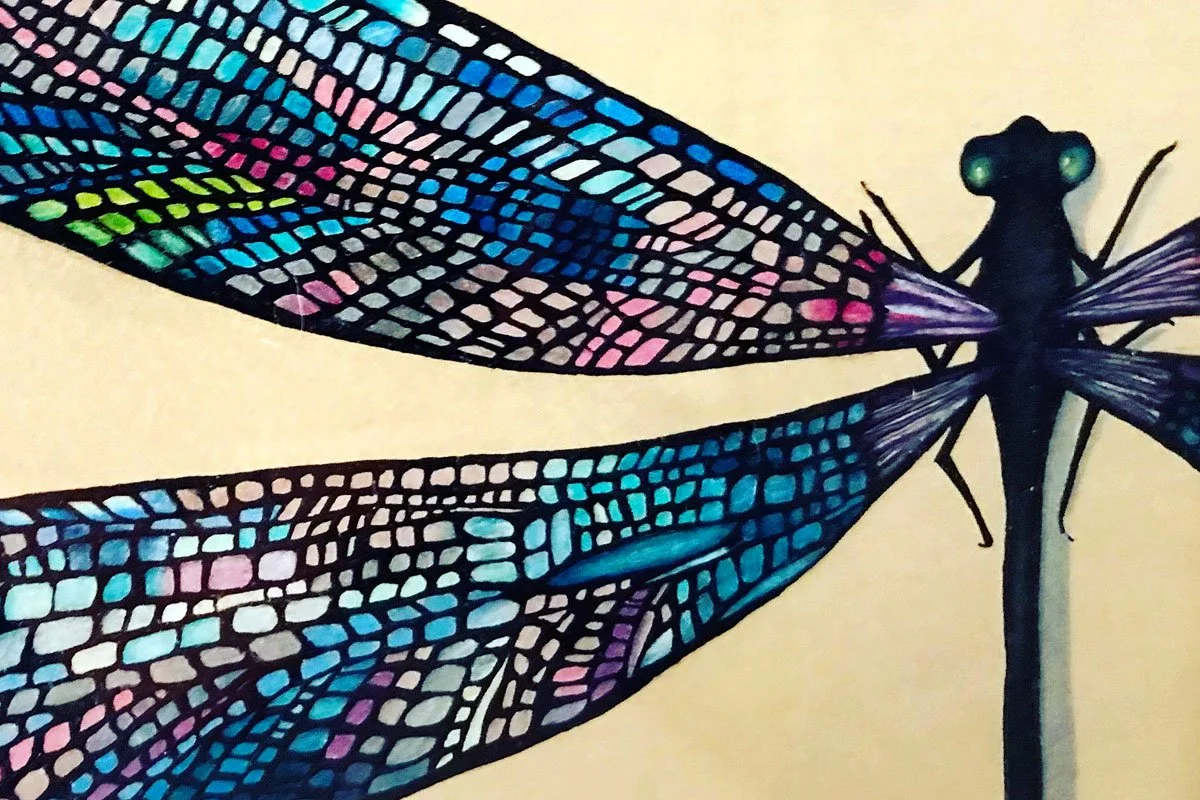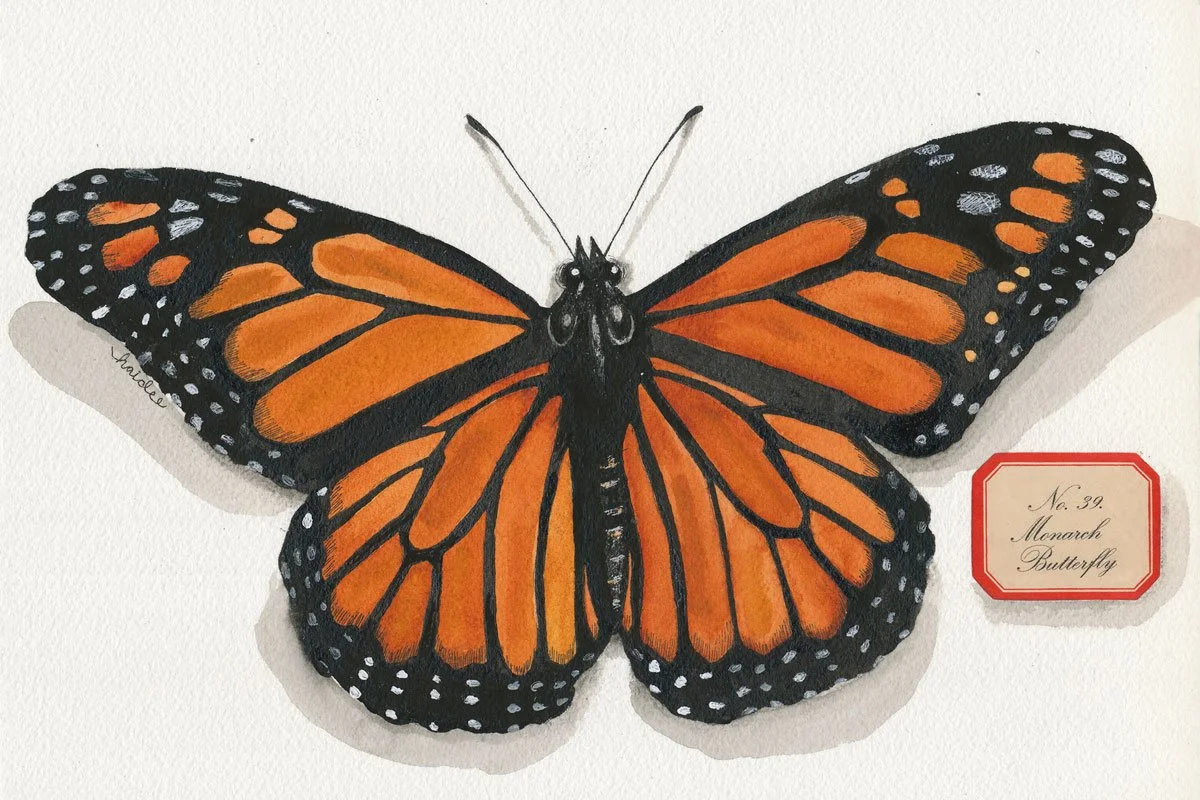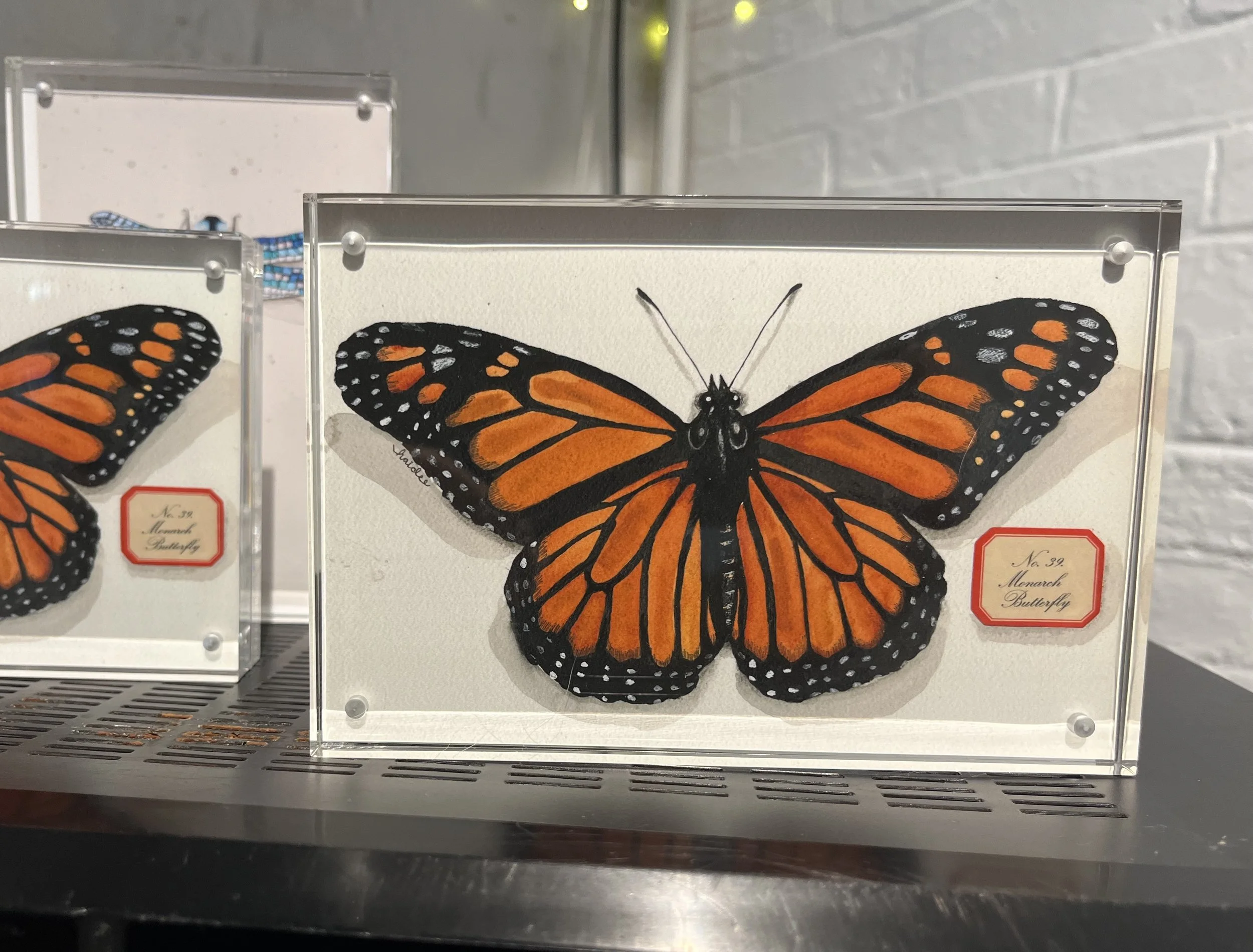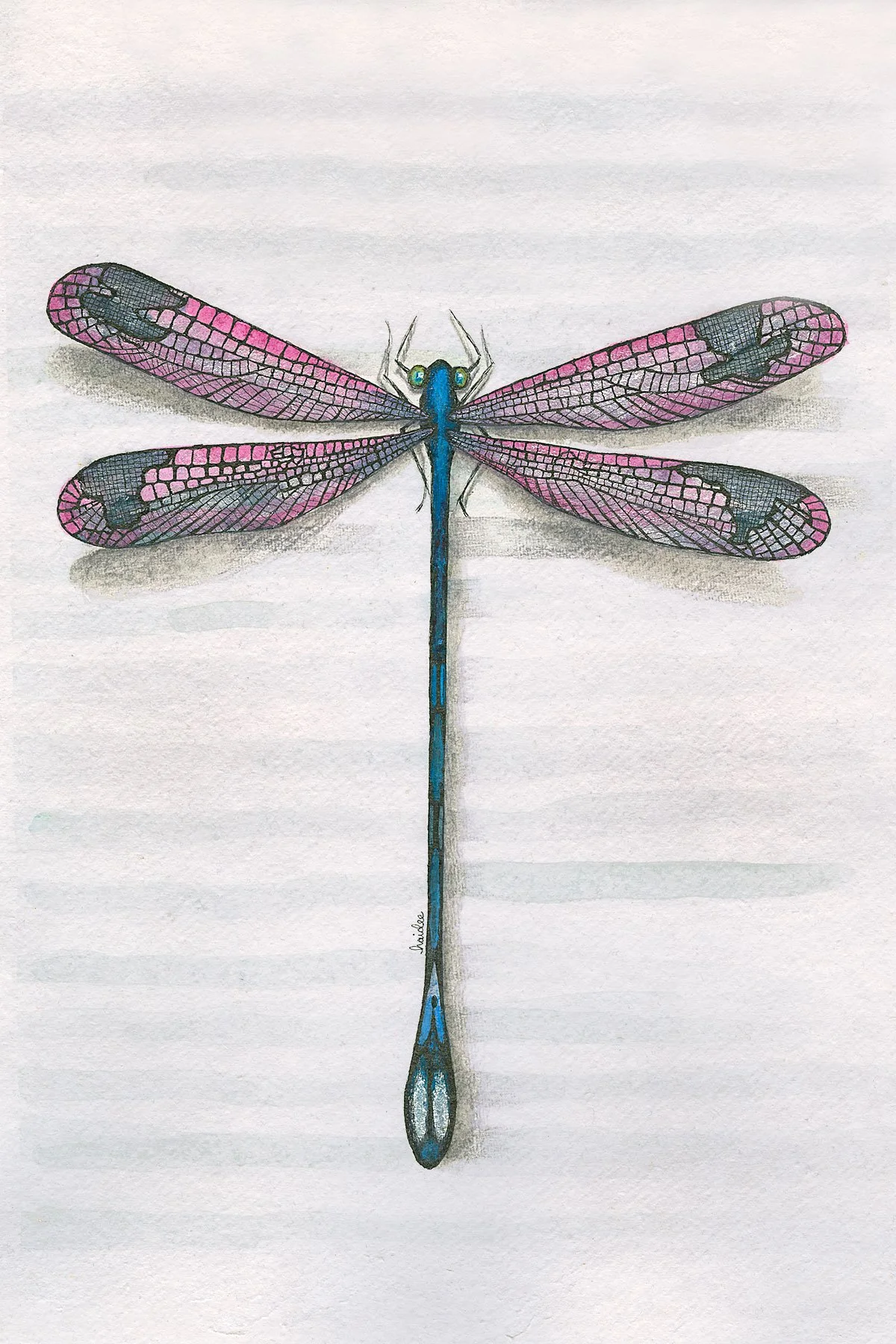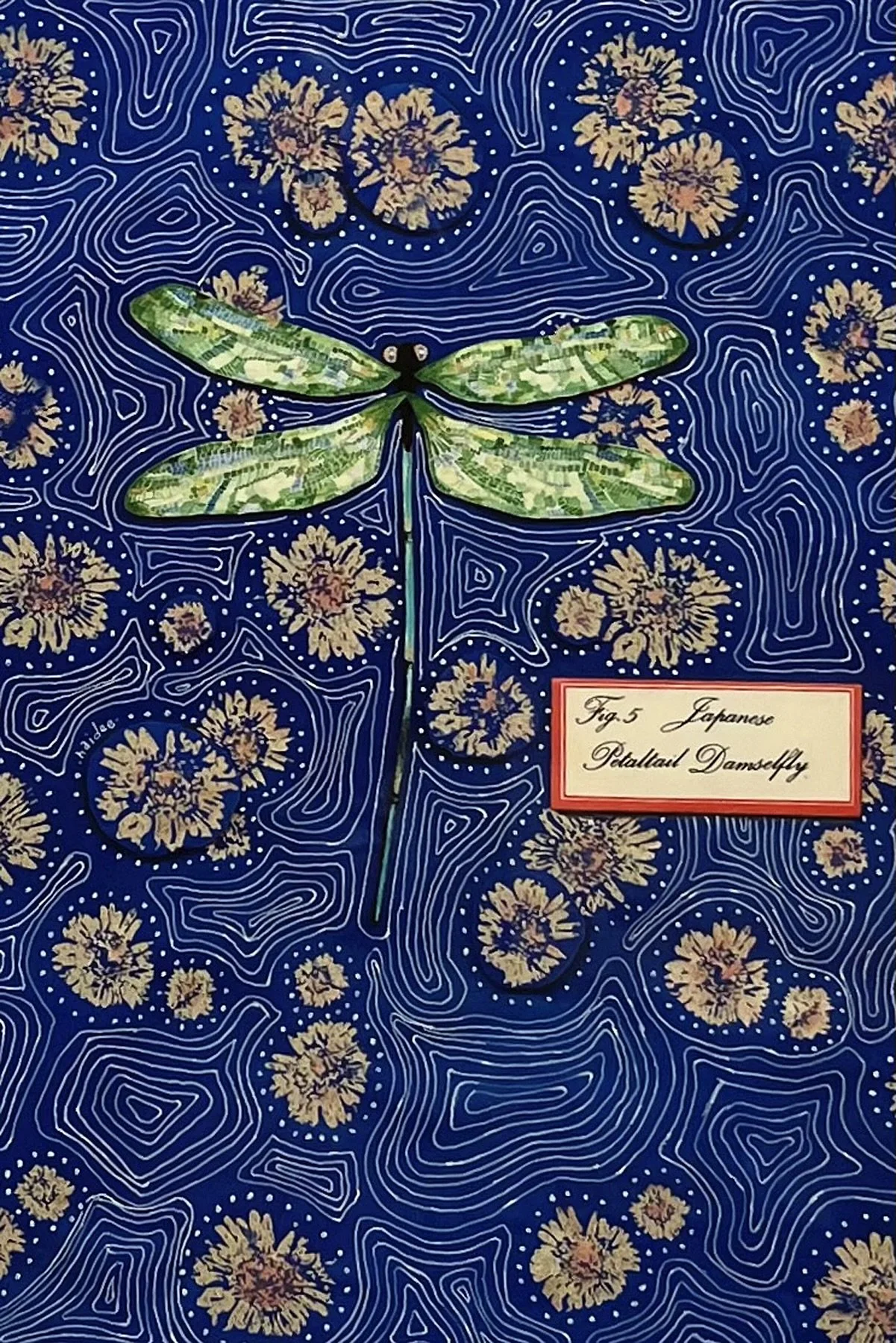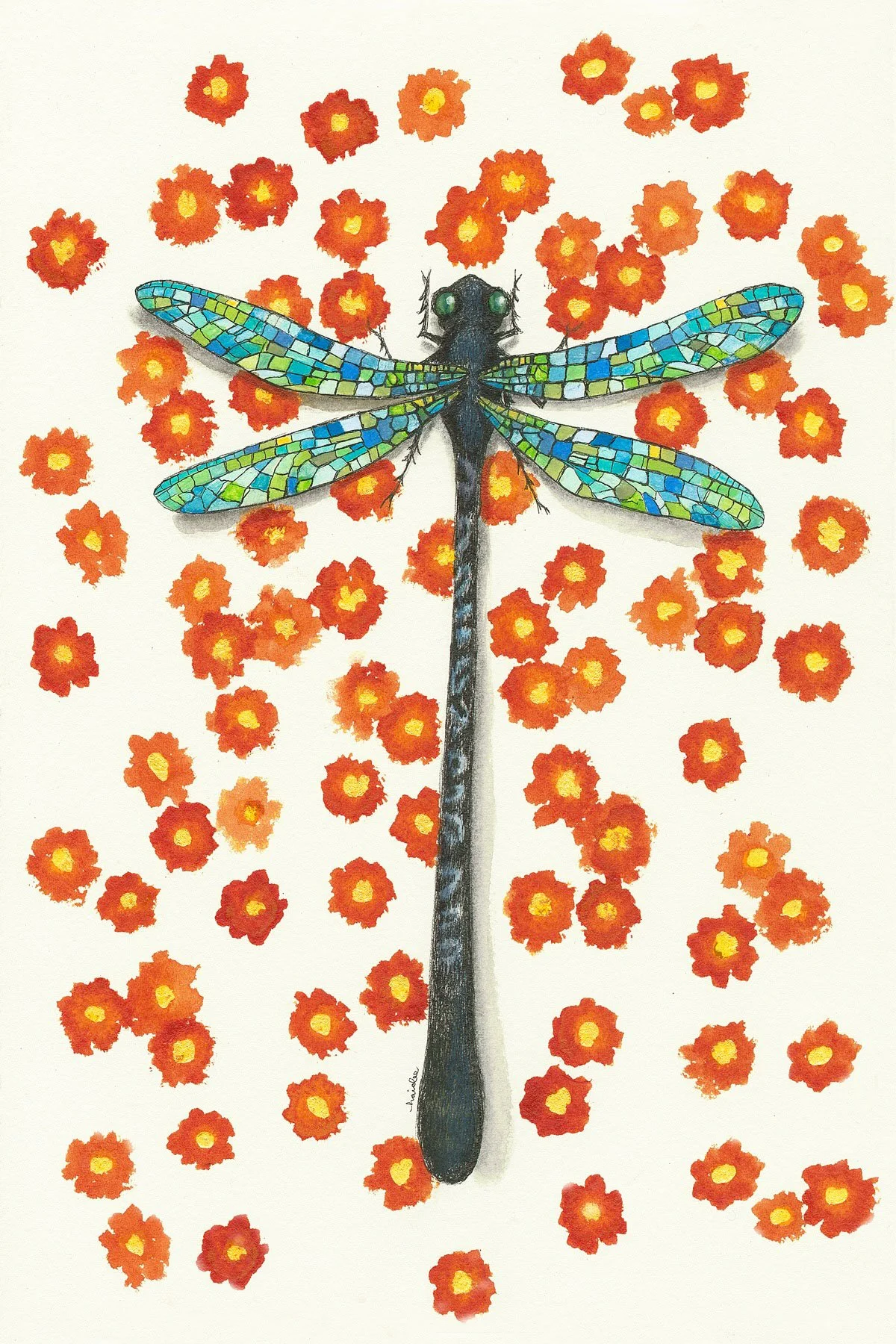The Chapel Winged Darner is one of the more architecturally haunting dragonflies documented in the warmer isles of the Atlantic. Discovered in Bermuda in the late autumn of 1891 by Imogen Vire, who had traveled there to restore the altar windows of a disused Anglican chapel, this specimen was first observed hovering in absolute stillness over a stone basin of stagnant rain. Vire mistook it for glass—shattered or ceremonial—but it rose and turned with sovereign ease, reflecting the dappled light of a low sun like a moving reliquary.
Each of its four wings was veined like the leadwork of a lost cathedral, and within each pane shimmered a kaleidoscopic array: the green of sliced guava, the pink-flesh glow of dragonfruit, passionfruit violet, lychee-pale iridescence, carambola gold, and the deep blue of bruised fig. These hues did not remain still; they moved in slow-turning patterns like sunlight filtered through moving water, or like the sacred glass of a window remembering its story. The insect’s slender body was almost shadowless—inky and soft-edged, with eyes like polished tourmaline marbles, lit from behind with a faint interior gleam.
No specimen was captured. Instead, she inked its outline into the margin of her chapel blueprints and painted its wings in pigments crushed from fruit peels and powdered glass. That rendering is still housed in the Bermudian Historical Collection under the label: Vitrellia sancta bermudensis. It’s also now part of the unofficial Bermuda Airborne Color Index—an informal ledger maintained by naturalists, illustrators, and those with an eye for the kind of movement that can’t be explained but also doesn’t need to be.
Note: High quality archival glicée print on acid-free paper, a method that creates fine art reproductions with exceptional color accuracy and longevity. Pigments-based inks are designed to resist fading and discoloration and capture the finest details and subtle color variations with great precision.
Housed in a 4×6” crystal-clear acrylic specimen block, its 1” depth allows freestanding display. Each piece is designed to exhibit on desk or shelf.
Fly Design uses a practice known as entonology — the study of fictitious insects — to reimagine the natural world through scientific storytelling and poetic design.

